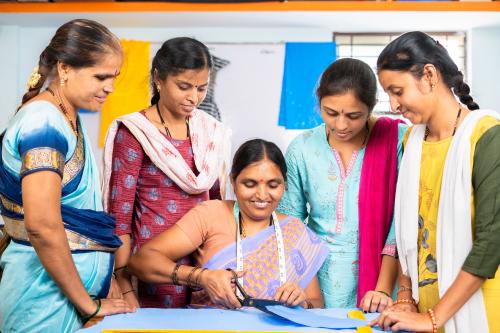In the United States, the official poverty rate for 2012 stood at 15 percent based on the national poverty line which is equivalent to around $16 per person per day. Of the 46.5 million Americans living in poverty, 20.4 million live under half the poverty line. This begs the question of just how poor America’s poorest people are.
Poverty, in one form or other, exists in every country. But the most acute, absolute manifestations of poverty are assumed to be limited to the developing world. This is reflected in the fact that rich countries tend to set higher poverty lines than poor countries, and that global poverty estimates have traditionally excluded industrialized countries and their populations altogether.
An important study on U.S. poverty by Luke Shaefer and Kathryn Edin gently challenges this assumption. Using an alternative dataset from the one employed for the official U.S. poverty measure, Shaefer and Edin show that millions of Americans live on less than $2 a day—a threshold commonly used to measure poverty in the developing world. Depending on the exact definitions used, they find that up to 5 percent of American households with children are shown to fall under this parsimonious poverty line.
Methodologies for measuring poverty differ wildly both within and across countries, so comparisons and their interpretation demand extreme care.
These numbers are intended to shock—and they succeed. The United States is known for having higher inequality and a less generous social safety net than many affluent countries in Europe, but the acute deprivations that flow from this are less understood. A crude comparison of Shaefer and Edin’s estimates with the World Bank’s official $2 a day poverty estimates for developing economies would place the United States level with or behind a large set of countries, including Russia (0.1 percent), the West Bank and Gaza (0.3 percent), Jordan (1.6 percent), Albania (1.7 percent), urban Argentina (1.9 percent), urban China (3.5 percent), and Thailand (4.1 percent). Many of these countries are recipients of American foreign aid. However, methodologies for measuring poverty differ wildly both within and across countries, so such comparisons and their interpretation demand extreme care.
This brief is organized into two parts. In the first part, we examine the welfare of America’s poorest people using a variety of different data sources and definitions. These generate estimates of the number of Americans living under $2 a day that range from 12 million all the way down to zero. This wide spectrum reflects not only a lack of agreement on how poverty can most reliably be measured, but the particular ways in which poverty is, and isn’t, manifested in the U.S.. In the second part, we reexamine America’s $2 a day poverty in the context of global poverty. We begin by identifying the source and definition of poverty that most faithfully replicates the World Bank’s official poverty measure for the developing world to allow a fairer comparison between the U.S. and developing nations. We then compare the characteristics of poverty in the U.S. and the developing world to provide a more complete picture of the nature of poverty in these different settings. Finally, we explain why comparisons of poverty in the U.S. and the developing world, despite their limitations and pitfalls, are likely to become more common.
The Brookings Institution is committed to quality, independence, and impact.
We are supported by a diverse array of funders. In line with our values and policies, each Brookings publication represents the sole views of its author(s).



